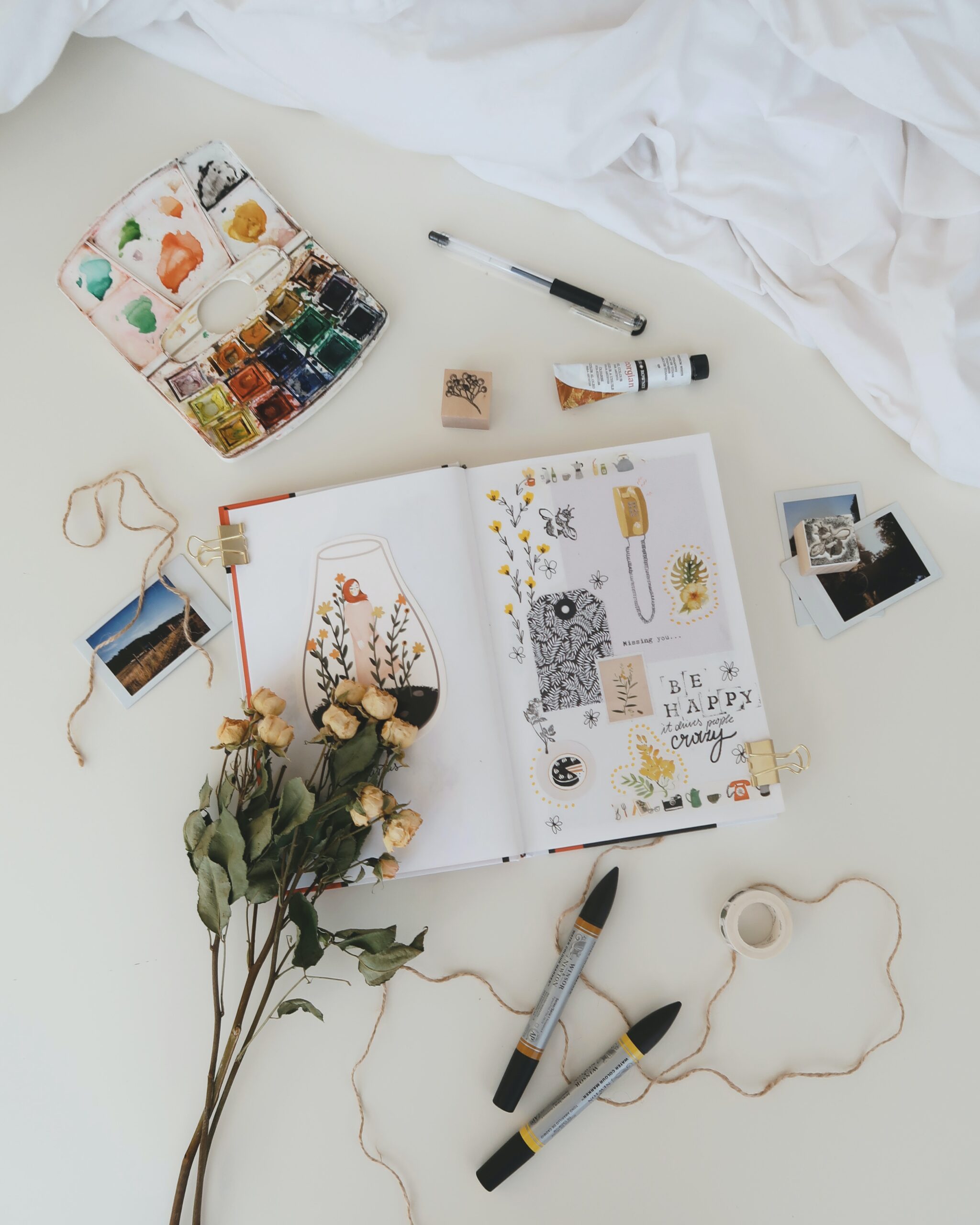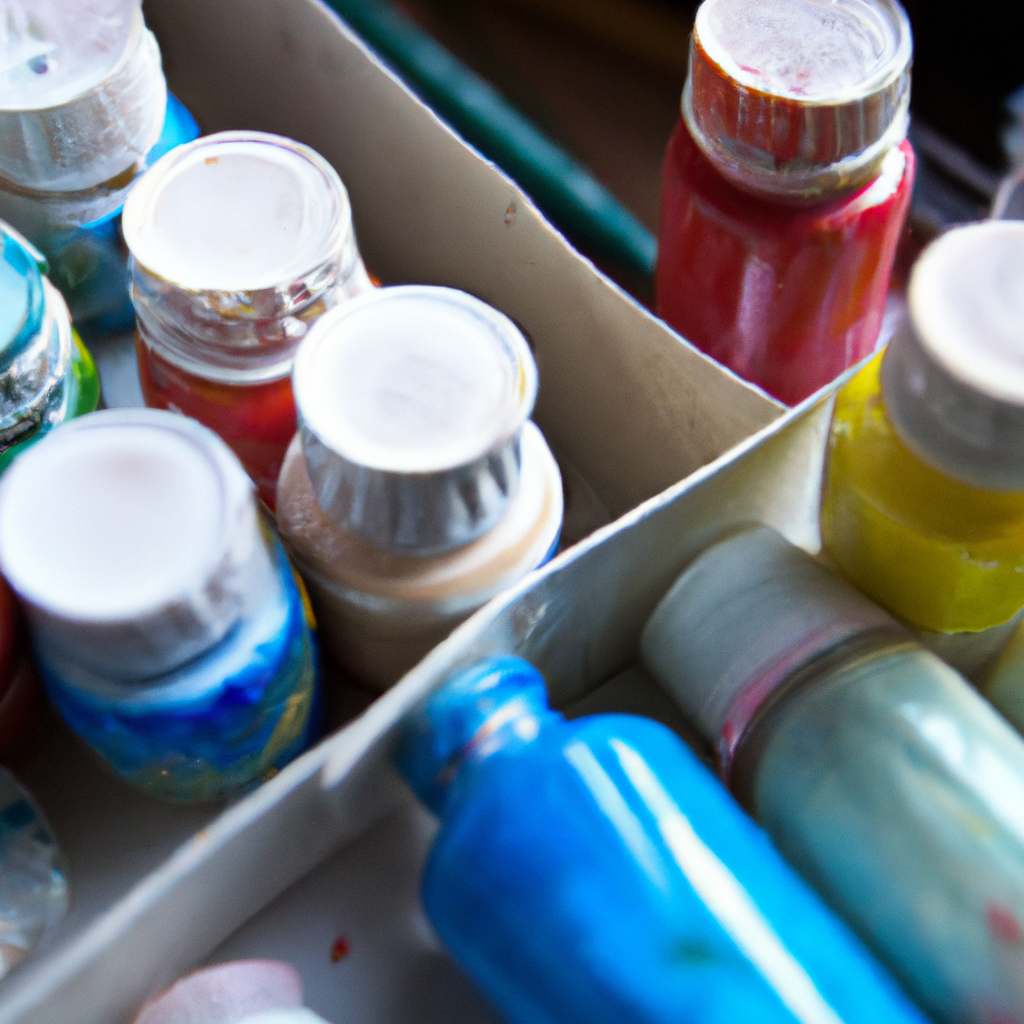In this article, you will discover a step-by-step guide on how to paint realistic clouds using gouache, a versatile and vibrant medium. Whether you are a beginner or an experienced artist, acquiring the skill to capture the ethereal beauty of clouds can greatly enhance your artistry. From understanding the properties of gouache and selecting the right materials to mastering various techniques, this article provides invaluable insights and tips to help you create stunning cloudscapes that will leave a lasting impression on your audience. So grab your brushes and prepare to unlock the secrets to painting captivating clouds with gouache.
Materials needed
To paint clouds with gouache, you will need the following materials:
Gouache paint
Gouache paint is a versatile medium for painting clouds. It is a type of opaque watercolor that is known for its intense colors and ability to be reactivated with water even after it dries.
Paintbrushes
Different sizes and shapes of paintbrushes will be needed to achieve different effects when painting clouds. Round brushes are great for creating smooth shapes, while flat brushes can be used to add texture.
Palette
A palette is essential for mixing and diluting the gouache paints. It can be made of plastic, glass, or ceramic and should have multiple wells for holding different colors.
Water
Water is necessary to dilute the gouache paint and create various shades and gradients. It is also used for cleaning the brushes in between colors.
Paper
Choosing the right paper is crucial for a successful gouache painting. Opt for a heavyweight paper or watercolor paper that can handle the moisture of the paint without warping.
Masking tape
Masking tape is useful for creating clean borders and edges on your paper. It can be used to tape down the paper to prevent it from moving while you paint.
Preparing the workspace
Before you start painting, it is important to prepare your workspace properly. This will ensure a pleasant and efficient painting experience.
Clearing the area
Clear any clutter from your workspace to create a clean and organized environment. Remove any unnecessary objects that may distract you from your painting.
Setting up the materials
Arrange all the materials you will need in a comfortable and easily accessible manner. This will allow you to focus on painting without constantly searching for the necessary tools.
Preparing the paper
If you are using a sketchbook or loose sheets of paper, make sure they are properly secured. If using loose paper, you can tape it down with masking tape to prevent it from moving as you paint.
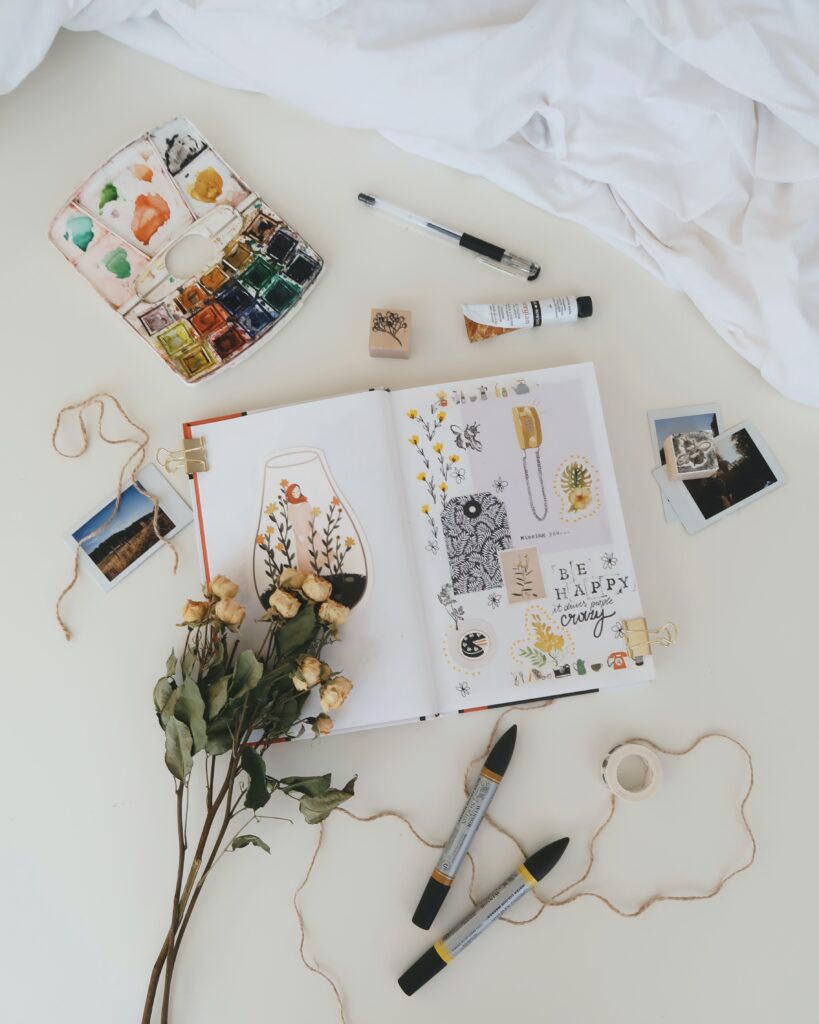
This image is property of images.unsplash.com.
Understanding gouache
Before you start painting clouds, it is important to have a basic understanding of gouache as a medium.
What is gouache?
Gouache is a water-based paint that is composed of pigment, water, and a binding agent, often gum arabic. It is opaque, meaning it is not transparent like watercolors, but it can still be diluted with water to create lighter washes.
Properties of gouache
Gouache has a high pigment concentration, which means it produces vibrant and opaque colors. It dries quickly, allowing for layering and building up of colors. Gouache can also be reactivated with water even after it has dried, making it a forgiving medium.
Advantages and challenges
One of the advantages of gouache is its ability to create flat, solid blocks of colors, which is great for painting clouds. It is also an excellent medium for creating details and textures. However, gouache can be challenging to work with as it requires precise color mixing and careful handling to avoid muddy results.
Observing cloud formations
To paint realistic clouds with gouache, it is important to observe and study different cloud formations.
Study different cloud types
Clouds come in various forms, including cumulus, stratus, and cirrus clouds, among others. Study their shapes and structures to understand how they are formed in the sky.
Notice variations in shapes and colors
Clouds are not uniform in shape and color. Observe how they change and morph as they move across the sky. Notice the subtle variations in their hues and tones.
Paying attention to light and shadow
Light and shadow play an essential role in painting realistic clouds. Observe how the sunlight interacts with the clouds to create highlights and shadows. This will add depth and dimension to your painting.
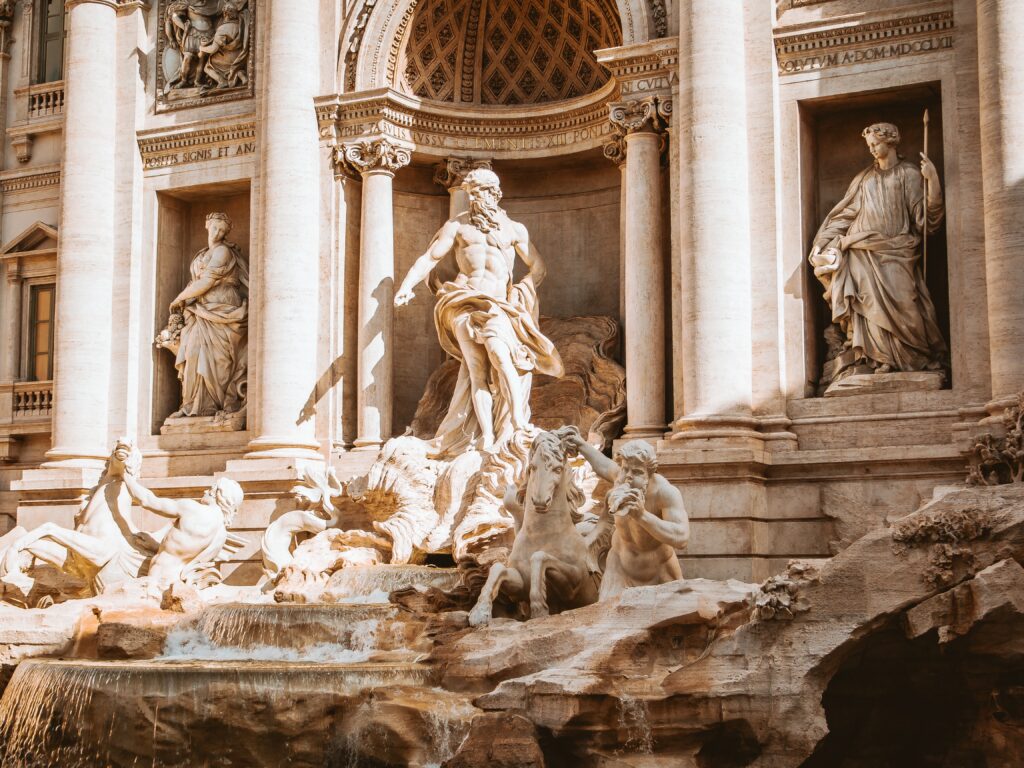
This image is property of images.unsplash.com.
Creating a preliminary sketch
Before diving into painting, it is beneficial to create a preliminary sketch of the cloud composition.
Choosing a composition
Decide on the composition you want for your painting. You can choose a single cloud as the focal point or create a landscape with multiple clouds. Consider the placement and arrangement of the clouds for the most pleasing composition.
Sketching the basic shapes
Using a pencil, lightly sketch the basic shapes of the clouds on your paper. Start with simple geometric shapes and gradually add more details. This will serve as a guide for your painting.
Adding details
Once the basic shapes are in place, start adding details to the clouds. Observe the specific characteristics of the clouds you are painting, such as wisps and fluffiness. Pay attention to the edges and contours of the clouds to capture their unique qualities.
Mixing colors for clouds
When painting clouds, it is important to mix the right colors to achieve a realistic appearance.
Identifying the base color
Observe the predominant color of the clouds you are painting. It could be a light gray, a pale blue, or even a warm beige. Start by mixing the base color using white, black, and other primary colors as needed.
Choosing complementary colors
To add depth and interest to your clouds, consider using complementary colors. Complementary colors are opposite each other on the color wheel, such as blue and orange or yellow and purple. Use these colors sparingly to create highlights and shadows.
Experimenting with different shades
Clouds are not uniform in color. They have subtle variations and gradients. Experiment with mixing different shades and tones of the base color to capture the true essence of clouds. Start with lighter shades and gradually add darker values to create depth.
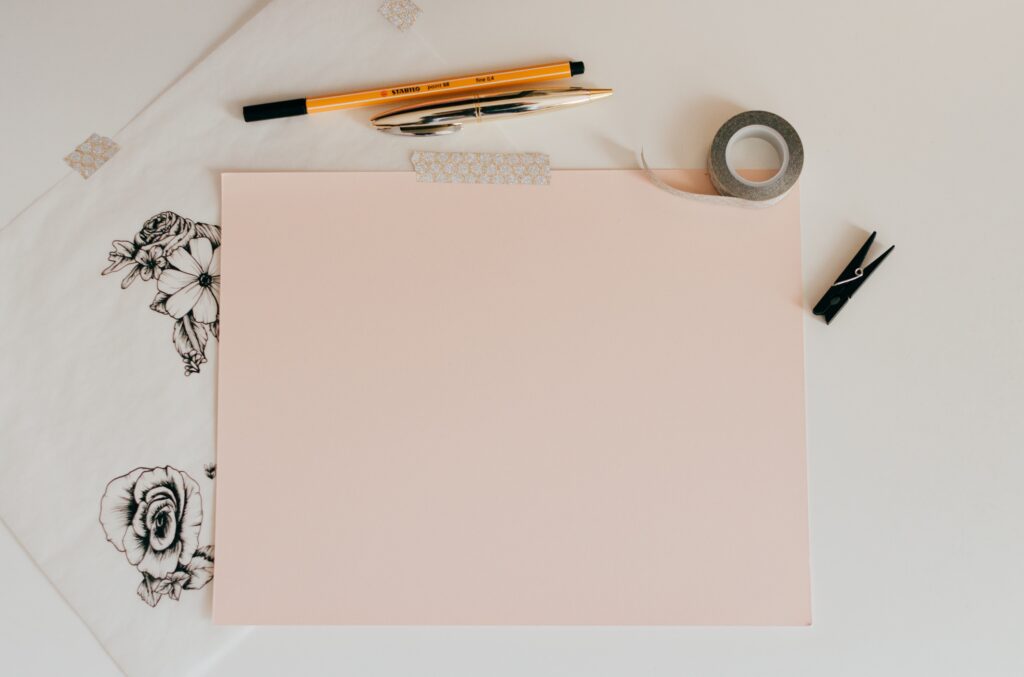
This image is property of images.unsplash.com.
Painting techniques for clouds
Different painting techniques can be used to achieve different effects when painting clouds with gouache.
Wet-on-wet technique
The wet-on-wet technique involves applying wet paint onto a wet surface. This technique is great for creating soft and blended edges between clouds and for capturing the ethereal nature of clouds. Apply a base wash of the desired color and then add layers of lighter or darker shades while the paint is still wet.
Wet-on-dry technique
The wet-on-dry technique involves applying wet paint onto a dry surface. This technique allows for more control and crisp edges. Apply a base layer of dry paint and then add additional layers of wet paint to build up the desired textures and shapes.
Dry brush technique
The dry brush technique involves using a dry brush with minimal water and paint. This technique is great for creating textured areas within the clouds, such as wisps and billows. Load a small amount of paint onto a dry brush and use quick, light strokes to create the desired effect.
Layering and building clouds
To create realistic and three-dimensional clouds, layering and building up the paint is crucial.
Starting with the background
Begin by painting the background layer of the sky using a light wash of the base color. This will serve as the foundation for your clouds.
Mixing varying levels of opacity
Layer the paint with varying levels of opacity to create depth and dimension in the clouds. Start with more transparent washes and gradually build up the opacity with subsequent layers. This will add complexity and realism to your clouds.
Adding depth with layers
As you layer the paint, pay attention to the placement of each layer to create depth. Darker shades can be added to the undersides of the clouds to mimic the shadows cast by the sunlight. Lighter highlights can be added on top to create a sense of volume and shape.

Highlights and shadows
Highlights and shadows are essential elements in painting realistic clouds.
Creating highlights with white gouache
Use white gouache to create highlights in your clouds. Add small dots or strokes of white to areas where the sunlight hits the clouds. This will give them a luminous and three-dimensional appearance.
Using lighter shades for highlights
In addition to white gouache, use lighter shades of the base color to create highlights. Mix a bit of white or a lighter color with the base color and apply it to the edges and upper portions of the clouds. This will enhance the sense of light and bring life to your painting.
Adding shadows for dimension
To create depth and dimension, add shadows to your clouds. Mix a darker shade of the base color with a touch of black or a complementary color, and apply it to the underside of the clouds. This will give them a sense of weight and realism.
Finishing touches
Before considering your painting complete, take the time to evaluate the overall composition and make any final adjustments.
Assessing the overall composition
Step back from your painting and assess the overall composition. Ensure that the clouds are balanced, the colors are harmonious, and the details are well-defined. Make any necessary adjustments to achieve the desired effect.
Making final adjustments
With a fine brush, make any final adjustments to the details and textures of the clouds. Add any additional highlights or shadows as needed to enhance the realism and depth.
Allowing the painting to dry
Finally, allow your painting to dry completely before framing or displaying it. Gouache dries quickly, but it is important to give it sufficient time to ensure the colors set properly and the paint fully adheres to the paper.
Painting clouds with gouache requires patience, observation, and practice. By understanding the properties of gouache, studying cloud formations, and utilizing various painting techniques, you can create stunning and realistic cloudscapes. So gather your materials, prepare your workspace, and let your creativity soar as you paint beautiful and ethereal clouds with gouache.

